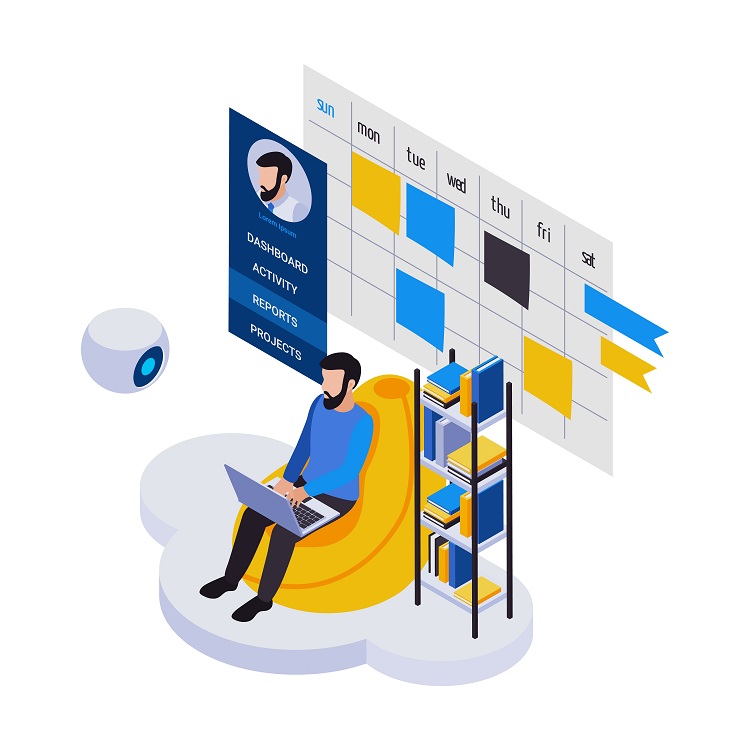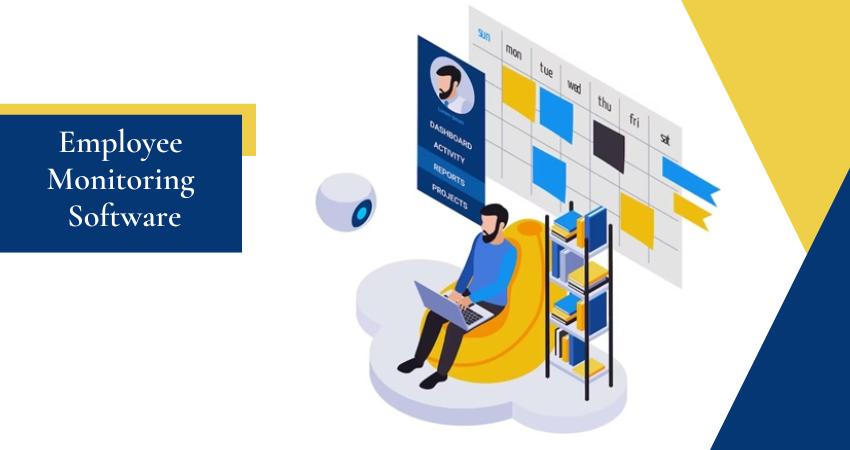Excellent Facts For Selecting Time Tracking Monitoring Service Company
What Exactly Is Employee Tracking Software And How Do I Choose It?The software for monitoring employees is a software that businesses to monitor and track employees' activities. It lets employers collect information on employee activities like Internet use, application usages, keystrokes or even screen shots. Employee monitoring software has the primary goal of increasing employee productivity, ensure that company policies are followed, protect sensitive info, and address any security concerns. When choosing a software for monitoring employees it is important to consider a variety of factors. Here are some key points to keep in mind- Features- Determine the specific features you require based on the needs of your business. The most common features are activities monitoring (including website blocking), keystroke logging (including application usage tracking) and email monitoring and reporting. Choose features that will align with your monitoring objectives.
Compliance and Privacy: Ensure the software complies with the ethical and legal guidelines for monitoring employees. Know the relevant laws as well as regulations and laws in your region. Consider software that offers transparent and configurable options to safeguard employee privacy.
Be sure to consider the software's usability and accessibility. A user-friendly interface and straightforward setup process will save time and ease of implementation. You should look for dashboards that can be customized and reporting tools which allow users to quickly understand the information collected.
Integration and Compatibility - Make sure that your software will integrate seamlessly with the current IT infrastructure you have and any systems you are using, including email clients collaborative platforms, project management tools, and operating systems. Compatible monitoring ensures smooth operations without causing disruptions to day-today routines.
Data Security: Examine the software security measures to ensure the security of data collected. It is vital to employ encryption, secure data storage and access controls. Verify that the software company offers strong data protection and security practices.
Scalability - Think about the software's capacity to grow with your business. If you plan on expanding your staff or adding new locations, choose software that can easily scale to accommodate the changing demands of your business.
Capabilities to Report and Analyze- Check the analytical and reporting capabilities of the program. Look for tools that offer an extensive view of productivity of employees, the scheduling of time, as well as trends. Customized reports and analytics will aid you in making informed choices and pinpoint areas for improvement.
Customer Support - Evaluate the quality and availability of the customer support provided by software companies. You can determine their accessibility, responsiveness, and the technical assistance that they provide. A good customer support team can provide quick assistance for any issues that may occur.
Cost- Think about the pricing model of the software, whether it's a one-time fee or subscription-based. Know the price, and whether there are extra charges for support, upgrades, or additional features. Make sure you balance the cost of your product in relation to its features and value.
Transparency and communication with employees- Be transparent and communicate clearly with your employees about the use and implementation of software for monitoring. Explain in detail the purpose the scope and expectation of the surveillance. Discuss any concerns that they may have as well as assure them of the respect for their privacy.
It is possible to make a more informed decision by taking into account these factors and choosing an employee monitoring system that meets your needs, and also protects the privacy of employees as well as satisfying legal requirements. Take a look at the best employee monitoring services for more info.

What Are The Features Of The Employee Monitoring Software?
Employee monitoring software has a wide range of features to track and analyze the activities of employees. Different software options may provide different features, but they are generally the most used. It provides a complete summary of what employees are doing at work.
Keystroke Logging: Keystroke logs track every single keystroke made by employees. It helps identify productivity bottlenecks as well as detect unauthorized actions and gather evidence to support investigations.
Screenshots & Screen Recordings- Certain software programs capture screen captures or record screens of employees at regular intervals. This feature can be used to measure productivity, confirm compliance, or to troubleshoot issues.
Internet Usage Tracking - This feature is used to track employee Internet activity such as sites visited, search queries, and downloads. It helps identify excessive non-work-related internet browsing, security threats, or policy violations.
This feature tracks all applications that employees use at work. It provides insights into the most frequently employed applications and flags any unapproved or excessive usage.
Email Monitoring permits employers to monitor all employee emails. This includes both sent and received emails, attachments to emails and email content. It helps ensure compliance with policies of the company, stops data leaks, investigates suspicious activity, and assists to ensure that employees are in compliance.
File and Document Tracking This feature tracks changes to files and their access. It helps protect sensitive data, monitor document collaboration, and make sure that data security is in compliance with policies.
Remote Monitoring is a function which allows employers to keep track of their employees, regardless of whether they are working from a distance or at different places. It lets employers monitor their work and increase efficiency regardless of physical location.
Productivity Analysis Software for monitoring employees usually includes productivity analysis tools that provide insight into the productivity of employees, work patterns, and time allocation. These analyses are used to optimize workflow and identify areas to improve.
Analytics and ReportingThe robust reporting and analytics features generate precise reports and graphs using the data collected. These reports can provide useful information about the performance of employees, their time management and resource allocation.
Software that offers features to ensure compliance and management of policies can ensure that a company's guidelines and policies are followed. They enable employers to define guidelines for acceptable usage of computers as well as internet connection.
Alerts/Notifications: Alerts/notifications notify employers or managers when certain events or activities happen. For example they may alert you users to avoid excessive use of the Internet and attempts to access restricted websites, or unusual behaviors.
It is important to be aware that different employee monitoring software might have different capabilities and features. Take into consideration the features of software that meet your goals for monitoring and adhere to legal and ethical guidelines in your area of responsibility. See the best employee monitoring services for blog examples.

What Is The Best Software For Monitoring Employees? Adhere To Compliance And Privacy Law?
It is important that the software used for monitoring employees adheres to compliance and data privacy laws. Software for monitoring employees must conform to specific laws regarding privacy and compliance. While they may differ according to the jurisdiction but some are common. Monitoring software for employees typically includes features that enable employers to clearly communicate their monitoring policy to employees. This could include providing written notices, seeking consent via consent forms or creating an employee handbook that outlines how to monitor practices.
Transparent Monitoring policies- Employee monitoring programs encourage transparency since they make sure employees understand the type of data that is collected, what the purpose of monitoring is, and what extent monitoring activities are carried out. Clear and comprehensive policies let employees know the limitations of monitoring as well as their privacy rights.
Data Minimization: To ensure the employee monitoring programs comply with privacy laws They usually adhere to the principle of minimization of data. Data minimization implies that only the essential information is collected, stored and not used. This software can help reduce the risk of privacy breaches by only collecting data that is needed to monitor.
Certain software for employee surveillance anonymizes, or aggregates, data in order to safeguard the privacy of employees. The anonymization process removes any personal information that could be identified as being personally identifiable from the information. It makes it difficult to connect data with an individual. Aggregation uses data from many employees to produce insight for a larger population without identifying anyone.
Secure Data Store and Encryption: Employee monitoring software places the security of the data it collects first. It employs methods for secure storage of data and encryption to protect collected data against unauthorised access, breaches, or data that is accidentally divulged. This means that data is protected while in transit and when in rest.
Access Controls and Restricted Permissions Monitoring software for employees provides access controls with granularity to guarantee compliance. This enables employers to restrict the amount of authorized users who are able to access the monitoring data for instance HR personnel or designated administrator.
Employee Rights and remedies - Respecting the rights of employees is a key part of complying with privacy and compliance laws. Software for monitoring employees typically includes features that permit employees to access their personal monitoring information, make corrections, or submit complaints. This software allows employees to assert their rights and pursue remedies for privacy violations.
Compliance to Data Protection Regulations – The employee monitoring software is built to conform with applicable laws on data protection like the General Data Protection Regulations in Europe and California Consumer Privacy Acts in America. Compliance involves implementing measures to protect personal data and respecting the rights of data subjects, and ensuring lawful processing of data.
Although employee monitoring software is an effective tool to help with compliance, it is important for organizations to consult legal experts and keep abreast of relevant laws and regulation in their region of jurisdiction. Compliance and privacy laws require a comprehensive plan that goes beyond more than just software. It also calls for clear policies, regular monitoring of compliance and education. View the top rated time tracking monitoring software for blog recommendations.
